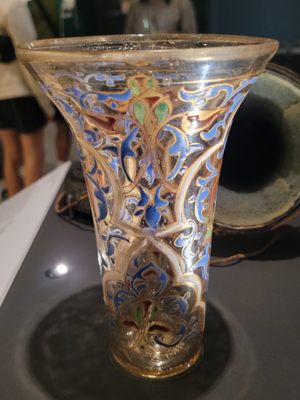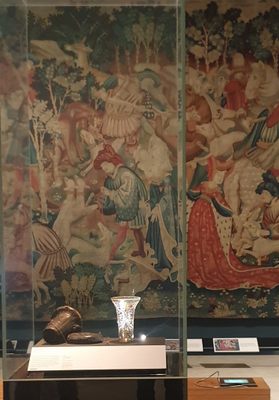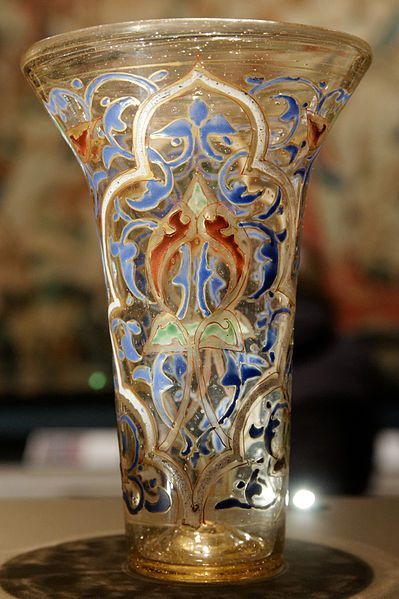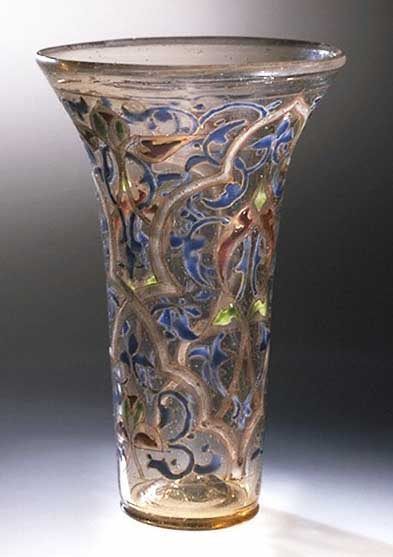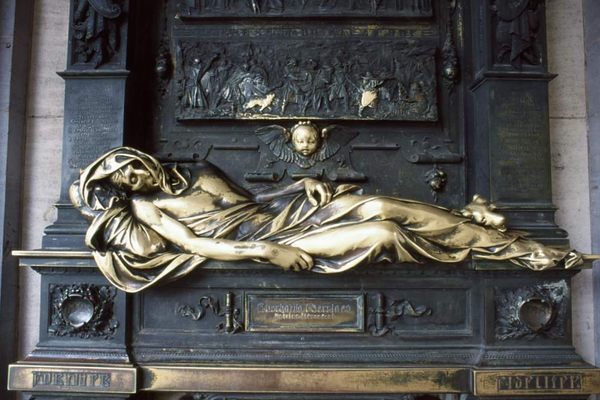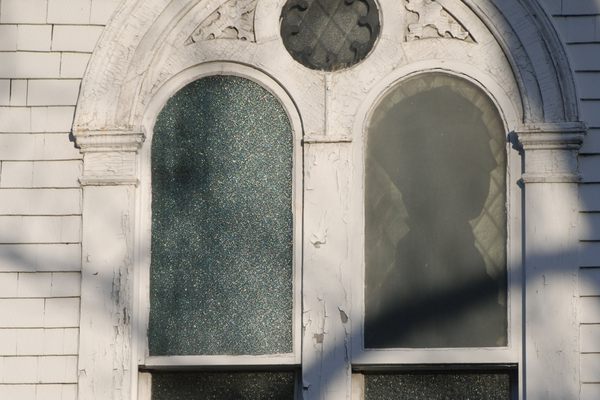About
With 600 years of history, and a journey from the Middle East to England behind it, this beautiful glass has a fascinating story and a name to match. For a drinking glass, the Luck of Edenhall is very old. And yet it seems to be as perfectly beautiful as when made 600 years ago. However, there is more to this glass than its age and beauty. A centuries-old legend holds that if ever broken, it might threaten the good fortune of its owner's household.
The glass was made in the mid-14th century in Egypt or Syria. It is patterned with intersecting arches and scrolling vines, the colorful and complex decorations a demonstration of its creator's impressive skill. By the 15th century, the beaker had taken a 3,000-mile journey to England. It is evident that it was already considered precious by this time, as it was provided with a finely decorated leather case, made less than a century after the glass itself.
This carefully-crafted protective layer may explain how the glass has survived for so many years. But if the stories are to be believed, there may be other, more supernatural reasons. In 1791, it was speculated that "ancient superstition may have contributed not a little to its preservation."
Some claim that the glass was brought back by a knight returning from the Crusades, while others believe it is a fairy cup, abandoned by its fae when they were interrupted at a well in Eden Hall’s garden. The Gentlemen’s Magazine of August 1791 tells that, as they fled, the fairies screamed out: "If this cup should break or fall, Farewell the luck of Edenhall."
The term "luck" was used in northern England at the time to describe some unusual objects thought to possess talismanic power. Examples of this include the Luck of Workington, a traveling communion cup that belonged to Mary, Queen of Scots. Although Eden Hall's "Luck" may have acquired its nickname at an earlier date, the "Luck of Edenhall" was recorded in 1677 in the will of Sir Philip Musgrave of Eden Hall.
In 1834 the poet Johann Ludwig Uhland imagines the consequences of its destruction in his poem, "The Luck of Edenhall": And the goblet ringing flies apart, Suddenly cracks the vaulted hall; / And through the rift, the wild flames start; / The guests in dust are scattered all, / With the breaking Luck of Edenhall! / In storms the foe, with fire and sword; / He in the night had scaled the wall, / Slain by the sword lies the youthful Lord, / But holds in his hand the crystal tall, The shattered Luck of Edenhall.
When it was at Eden Hall, the glass was apparently kept behind an iron door and stone wall, in case of fire. In 1926 however, it left this containment and was placed on loan at the Victoria and Albert Museum, where after 600 years, many miles, and as many stories, it remains intact.
Related Tags
Know Before You Go
Located in the Victoria and Albert Museum, in Medieval & Renaissance, Room 10a, on the left side of room 10, the Françoise and Georges Selz Gallery, case 5, which is directly in front of the archway.
Community Contributors
Added By
Published
May 5, 2022






